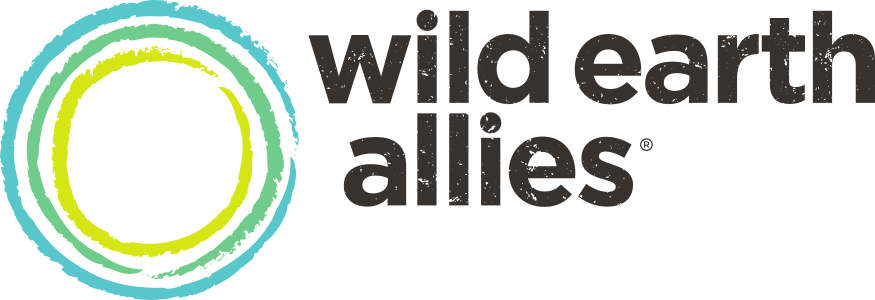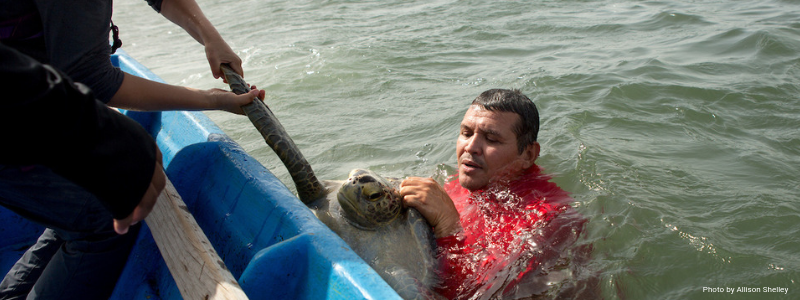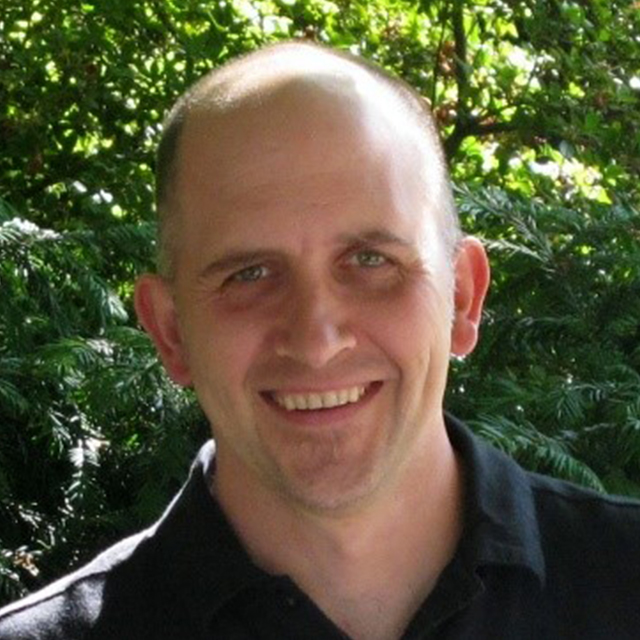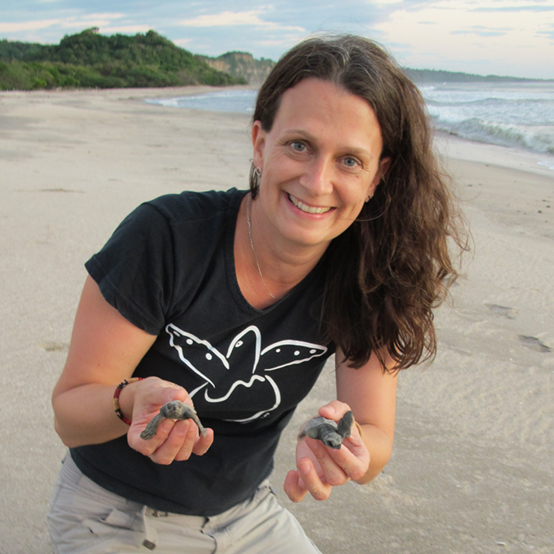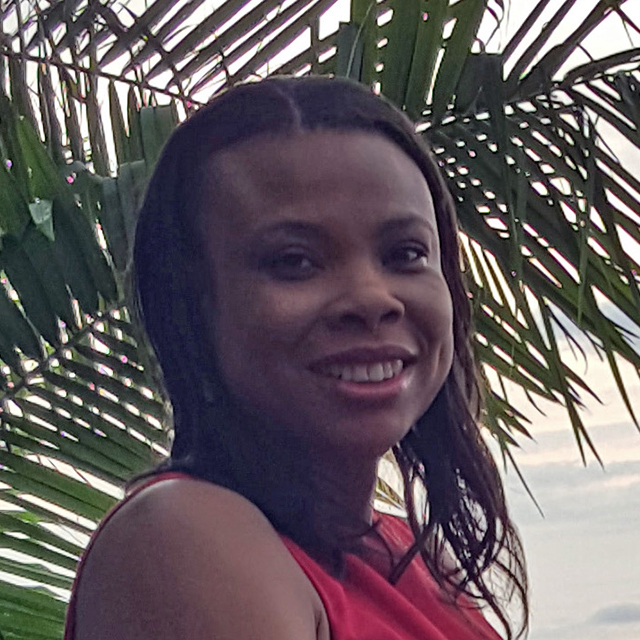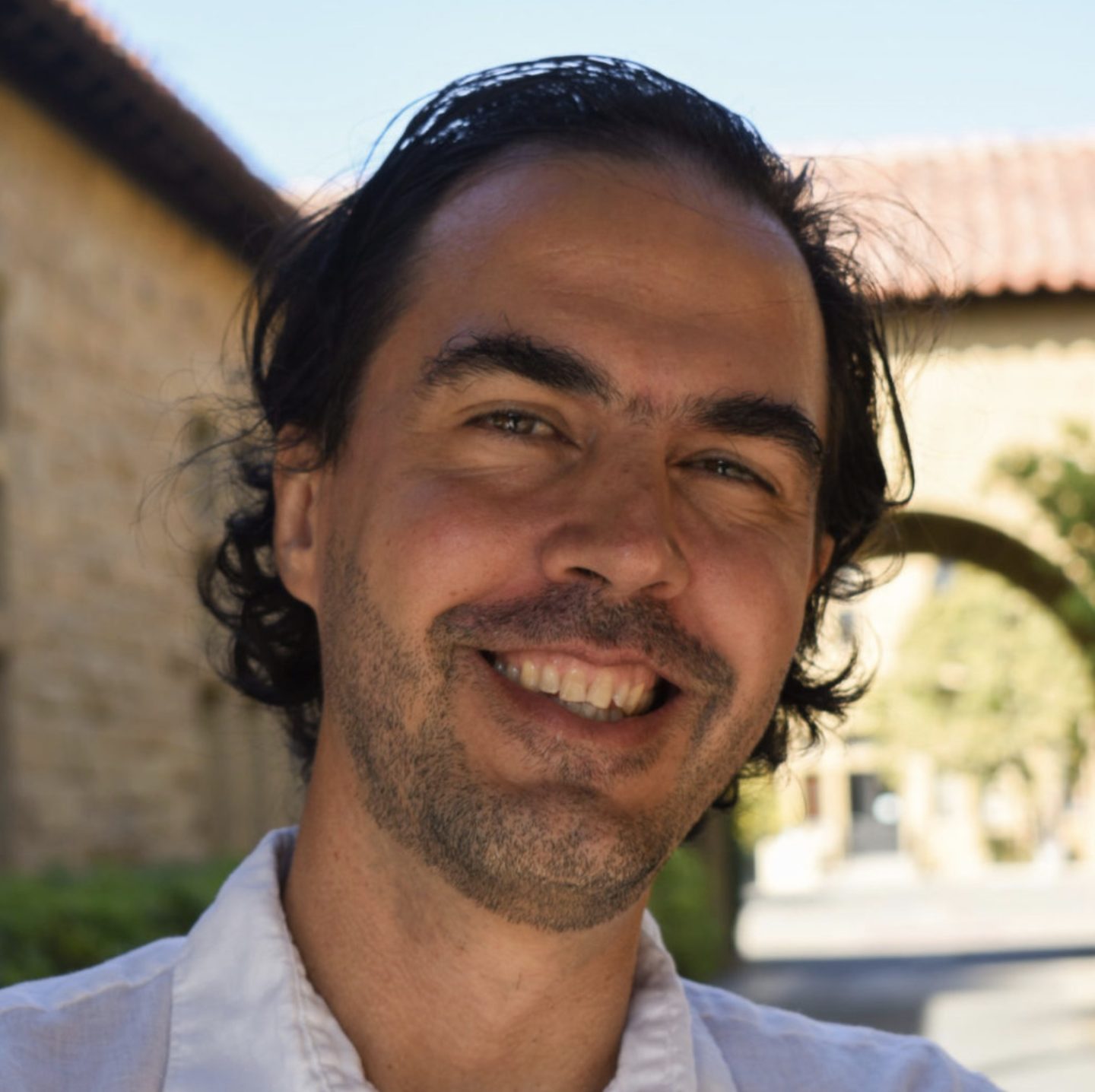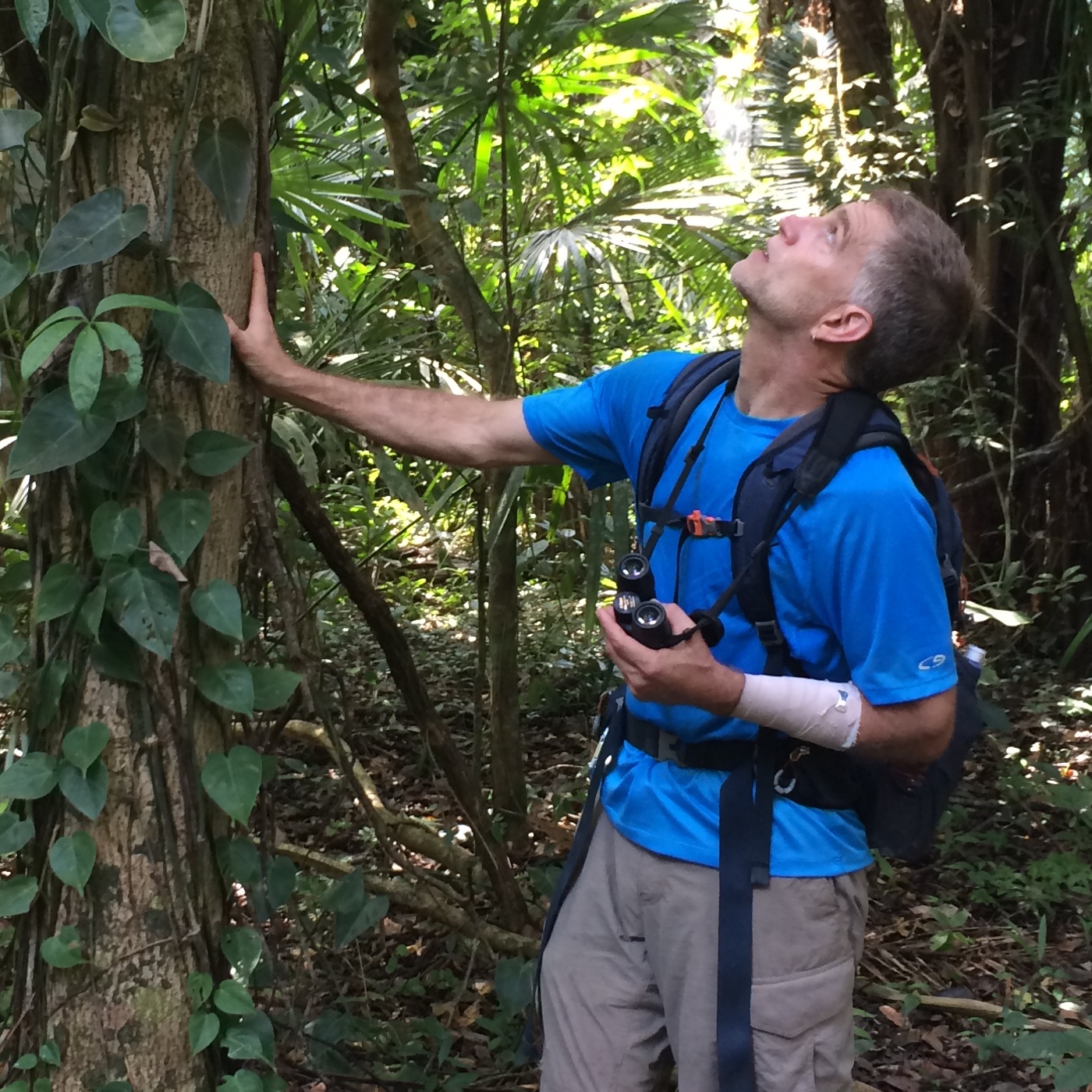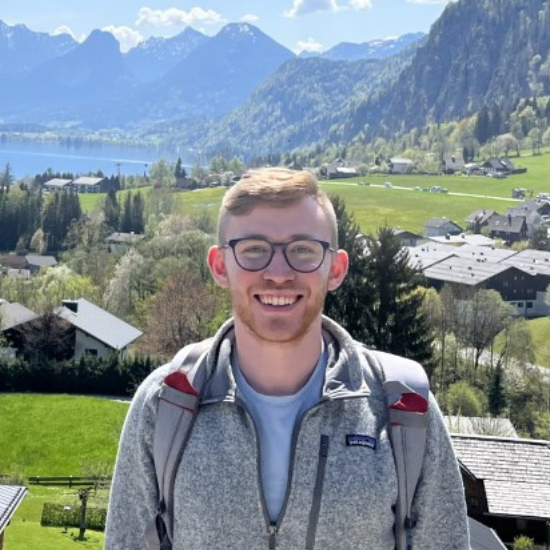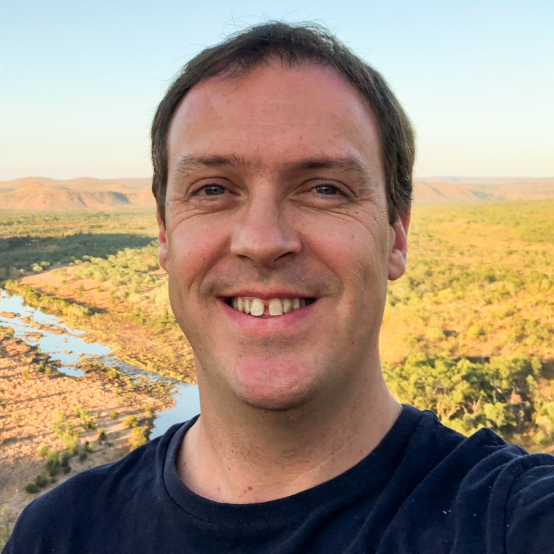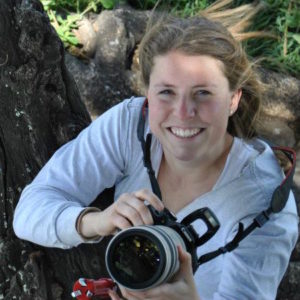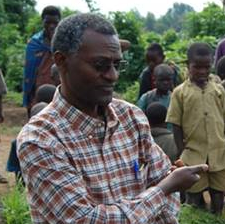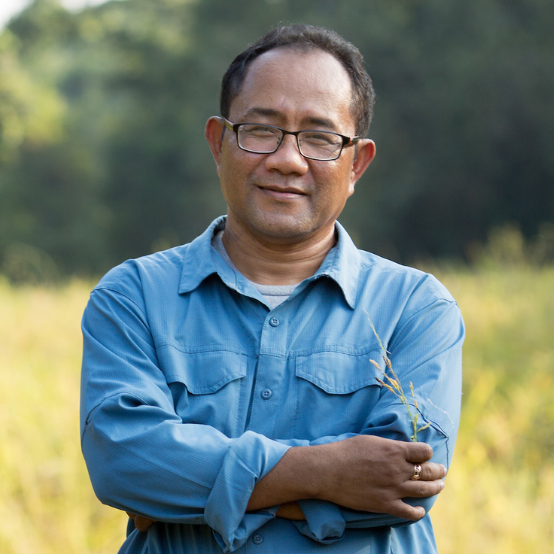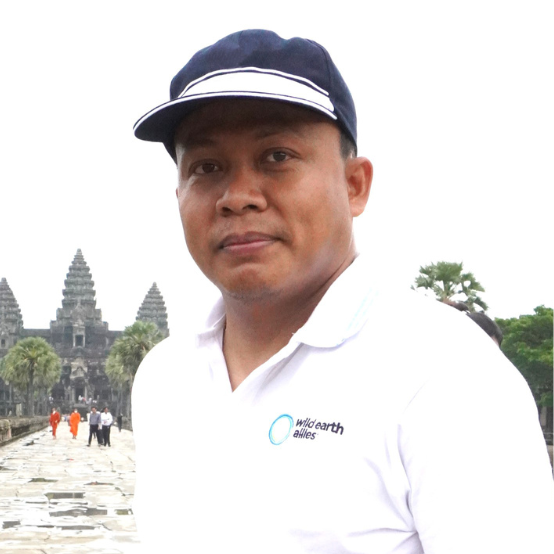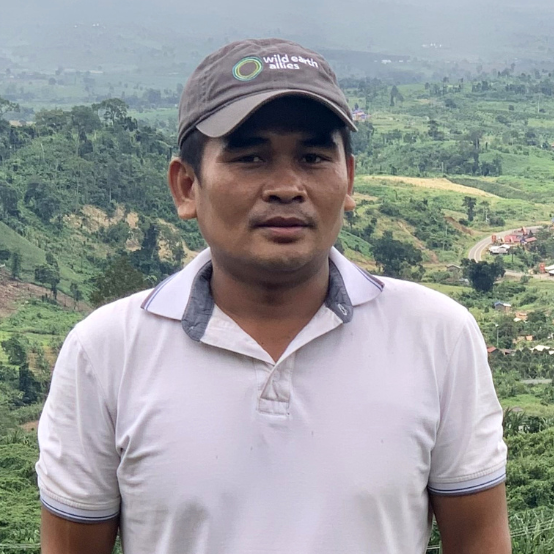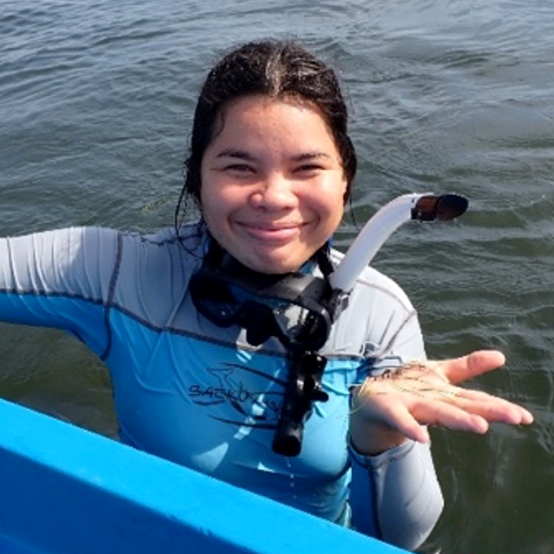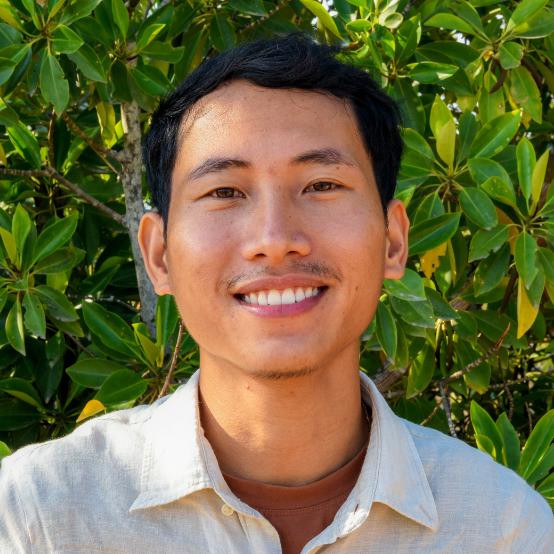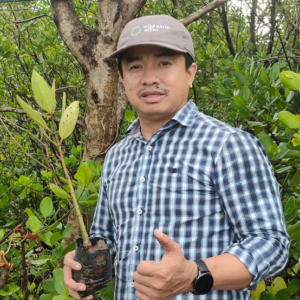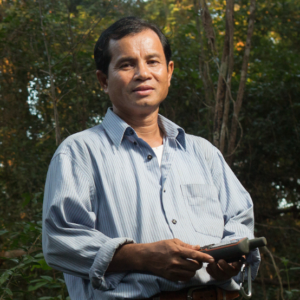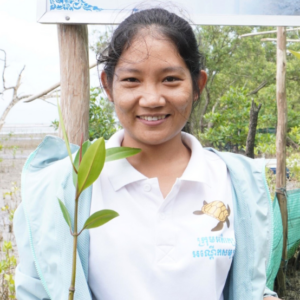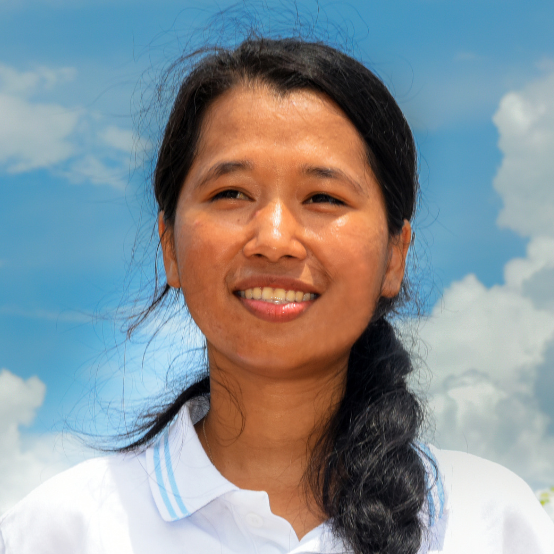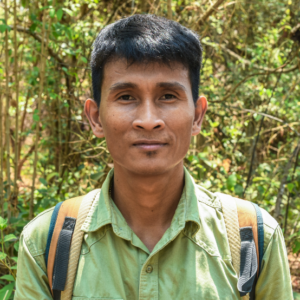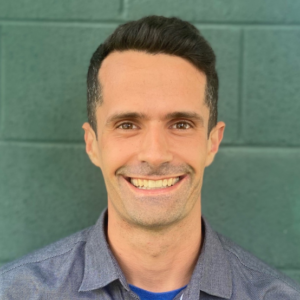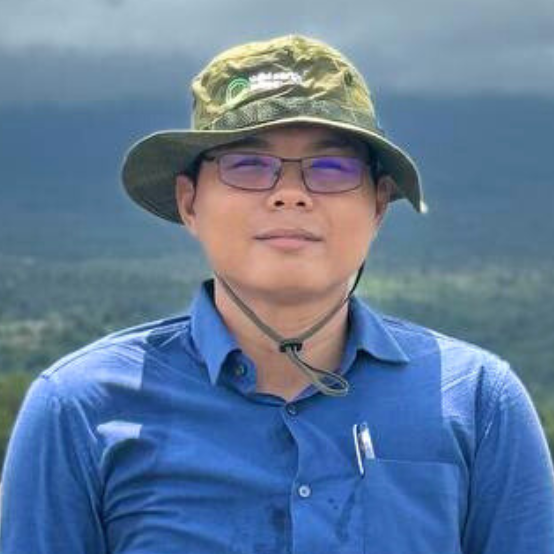ProCosta conducts in-water monitoring to advance our understanding of marine turtles and their conservation needs, but it’s not only team members diving in. A conservation tourism program invites everyone to experience this exciting work and unique ecosystem. Independent photojournalist Allison Shelley captured these action-filled programs in the following photo series.
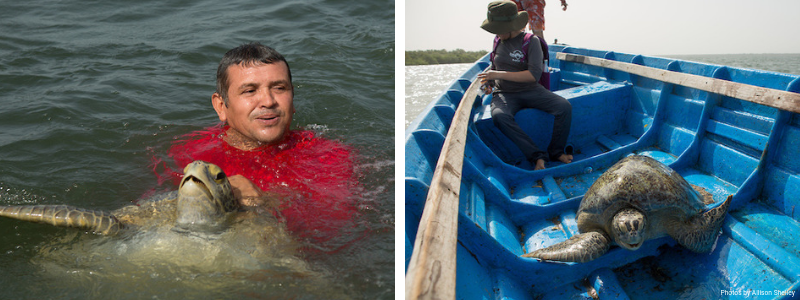
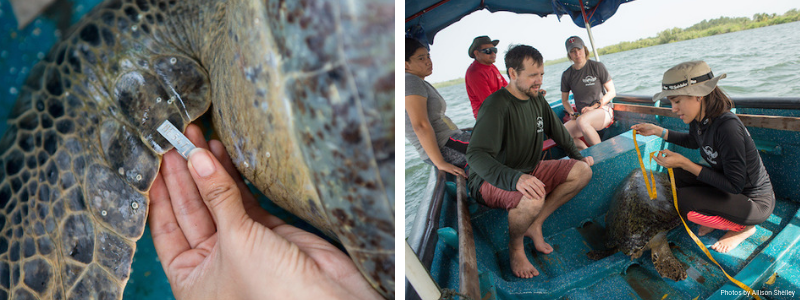 Conservation Tourism Program Coordinator Melissa Valle reads the tag on a green turtle (left). ProCosta President Mike Liles and Valle perform a monitoring check (right). Checks include weighing, measuring, and tagging.
Conservation Tourism Program Coordinator Melissa Valle reads the tag on a green turtle (left). ProCosta President Mike Liles and Valle perform a monitoring check (right). Checks include weighing, measuring, and tagging.
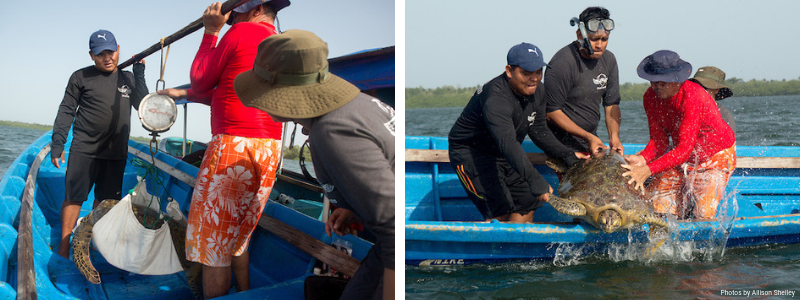 In-water Monitors Otoniel Benítez and Boanerges Sánchez weigh a green turtle with Sofía Chavarría (left). Team members release the green turtle after the monitoring check. Pictured left to right: Benítez, Volunteer Nestor González, and Sánchez (right).
In-water Monitors Otoniel Benítez and Boanerges Sánchez weigh a green turtle with Sofía Chavarría (left). Team members release the green turtle after the monitoring check. Pictured left to right: Benítez, Volunteer Nestor González, and Sánchez (right).
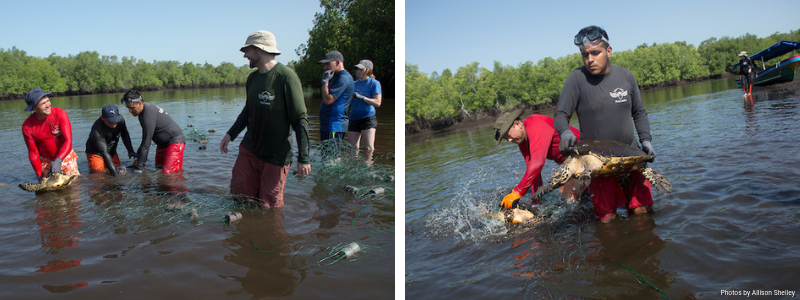 Boanerges Sánchez, left, speaks to Mike Liles as members of the ProCosta team lift two hawksbill turtles from the Santa Rosa channel (left). Sánchez and Nestor González return hawksbills after administering monitoring checks (right).
Boanerges Sánchez, left, speaks to Mike Liles as members of the ProCosta team lift two hawksbill turtles from the Santa Rosa channel (left). Sánchez and Nestor González return hawksbills after administering monitoring checks (right).
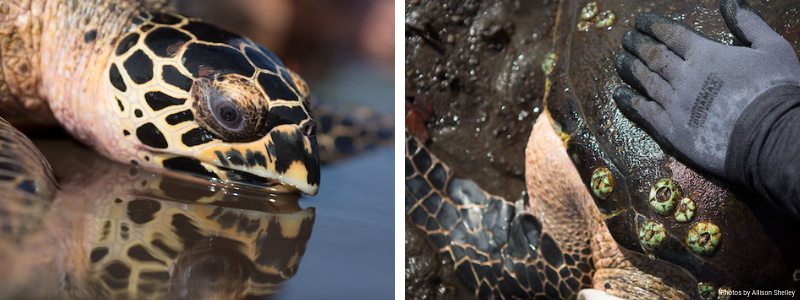 A hawksbill turtle rests on a sandbar in the Santa Rosa channel (left). Nestor González touches the back of the hawksbill in preparation for removing barnacles (right).
A hawksbill turtle rests on a sandbar in the Santa Rosa channel (left). Nestor González touches the back of the hawksbill in preparation for removing barnacles (right).
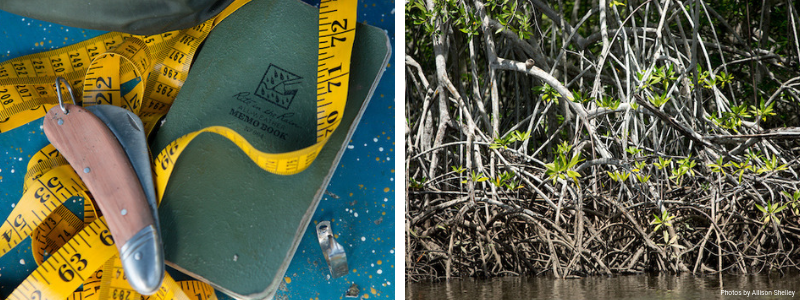 Materials used by ProCosta to aid in monitoring hawksbill sit between checks on a boat (left). Mangroves grow along the banks of Jiquilisco Bay (right).
Materials used by ProCosta to aid in monitoring hawksbill sit between checks on a boat (left). Mangroves grow along the banks of Jiquilisco Bay (right).
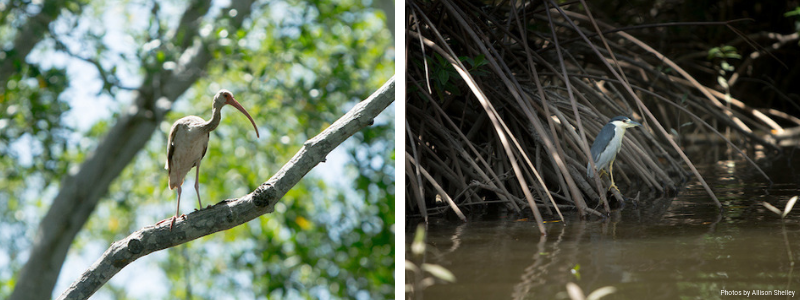 A juvenile White Ibis sits on mangrove branches (left). A Black-crowned Night-Heron walks along mangrove roots (right). ProCosta’s conservation tourism program includes tours of local wildlife.
A juvenile White Ibis sits on mangrove branches (left). A Black-crowned Night-Heron walks along mangrove roots (right). ProCosta’s conservation tourism program includes tours of local wildlife.
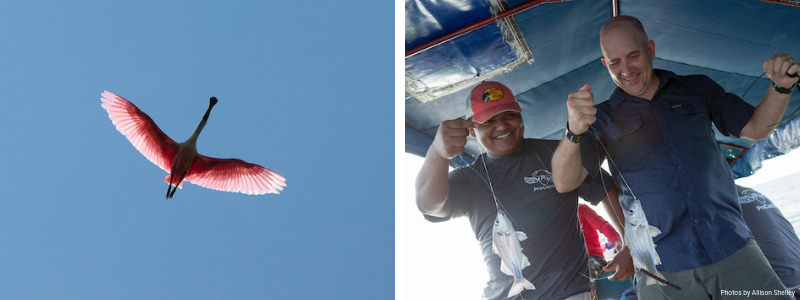 A Roseate Spoonbill soars overhead in Jiquilisco Bay (left). Otoniel Benítez, left, and Wild Earth Allies Conservation Director Adam Henson show off their catch (right). The conservation tourism program includes artisanal fishing excursions to learn how to fish as many locals do – using a plastic bottle, line and hook.
A Roseate Spoonbill soars overhead in Jiquilisco Bay (left). Otoniel Benítez, left, and Wild Earth Allies Conservation Director Adam Henson show off their catch (right). The conservation tourism program includes artisanal fishing excursions to learn how to fish as many locals do – using a plastic bottle, line and hook.
Watch for new stories featuring Allison Shelley’s images on Facebook and Twitter, or sign up for our emails.
This post is part two of a three-part series on marine turtle conservation. The first post, The Love and Labor of Hawksbill Conservation is available on our news page.
Follow ProCosta news on Facebook and Instagram.
Wild Earth Allies works with Salvadoran partner ProCosta to protect critically endangered hawksbill turtles at Jiquilisco Bay, one of two primary hawksbill nesting sites in the region. Our collaboration centers on supporting ProCosta’s local hawksbill conservation network, comprised largely of former egg poachers and artisanal fishing communities.

